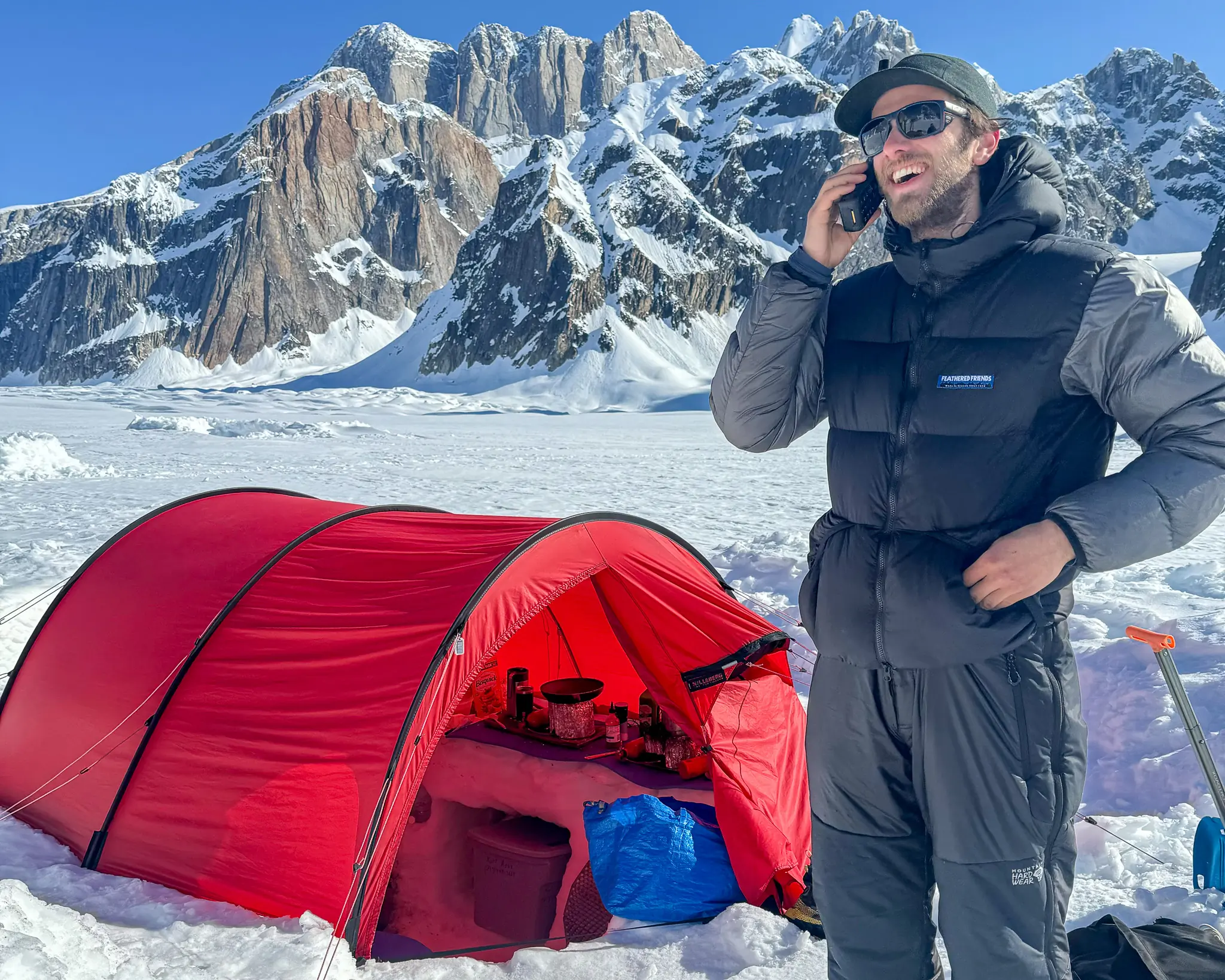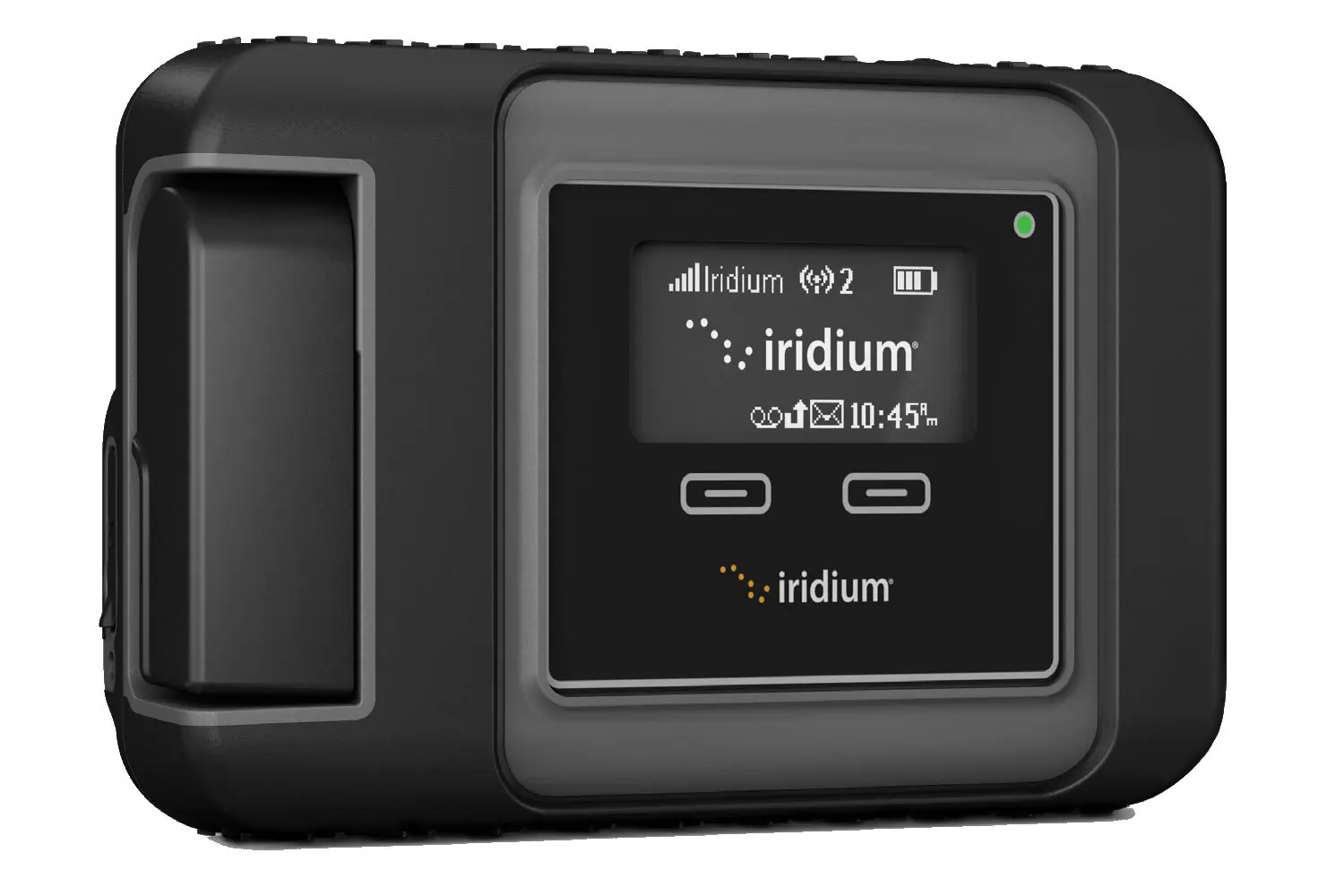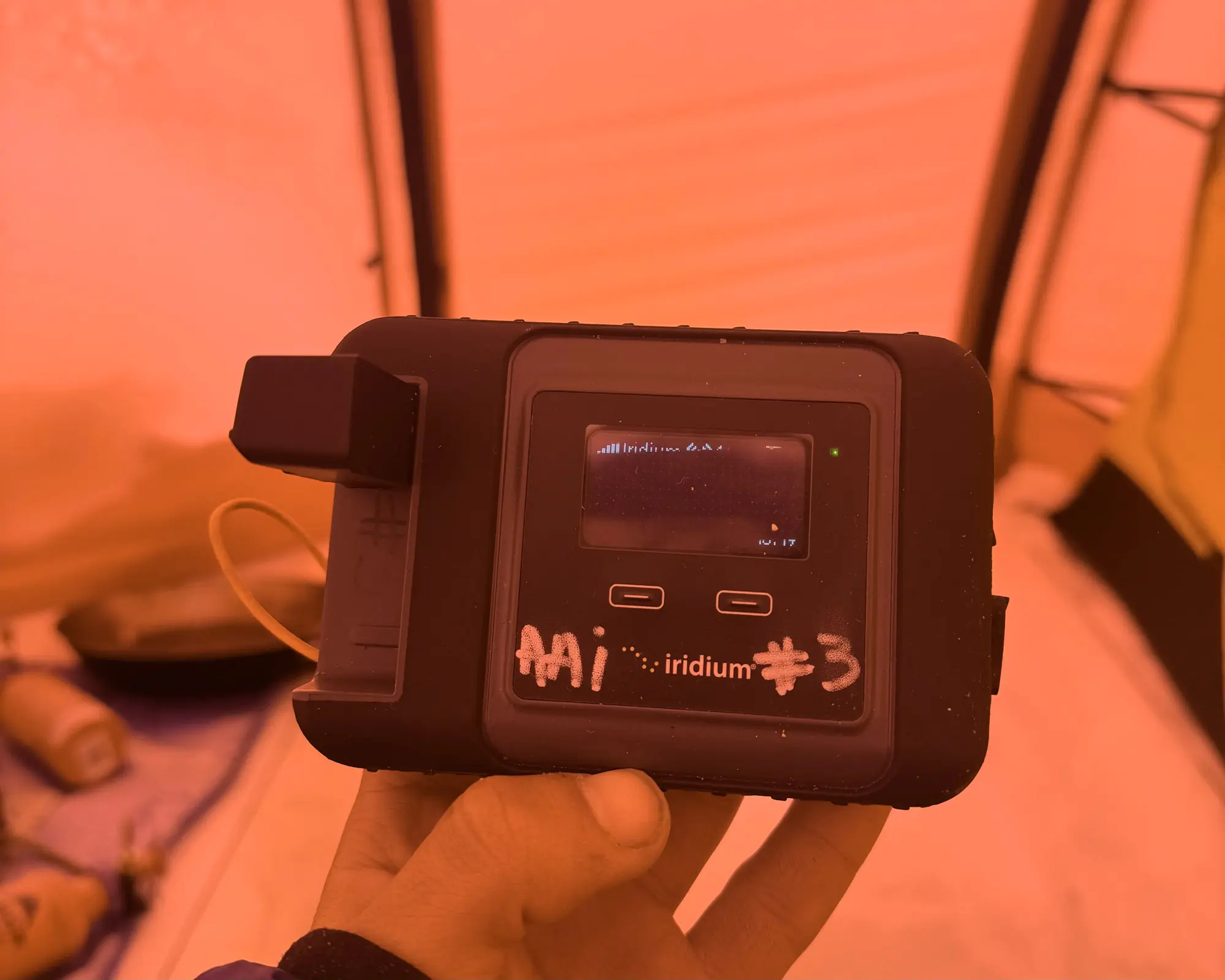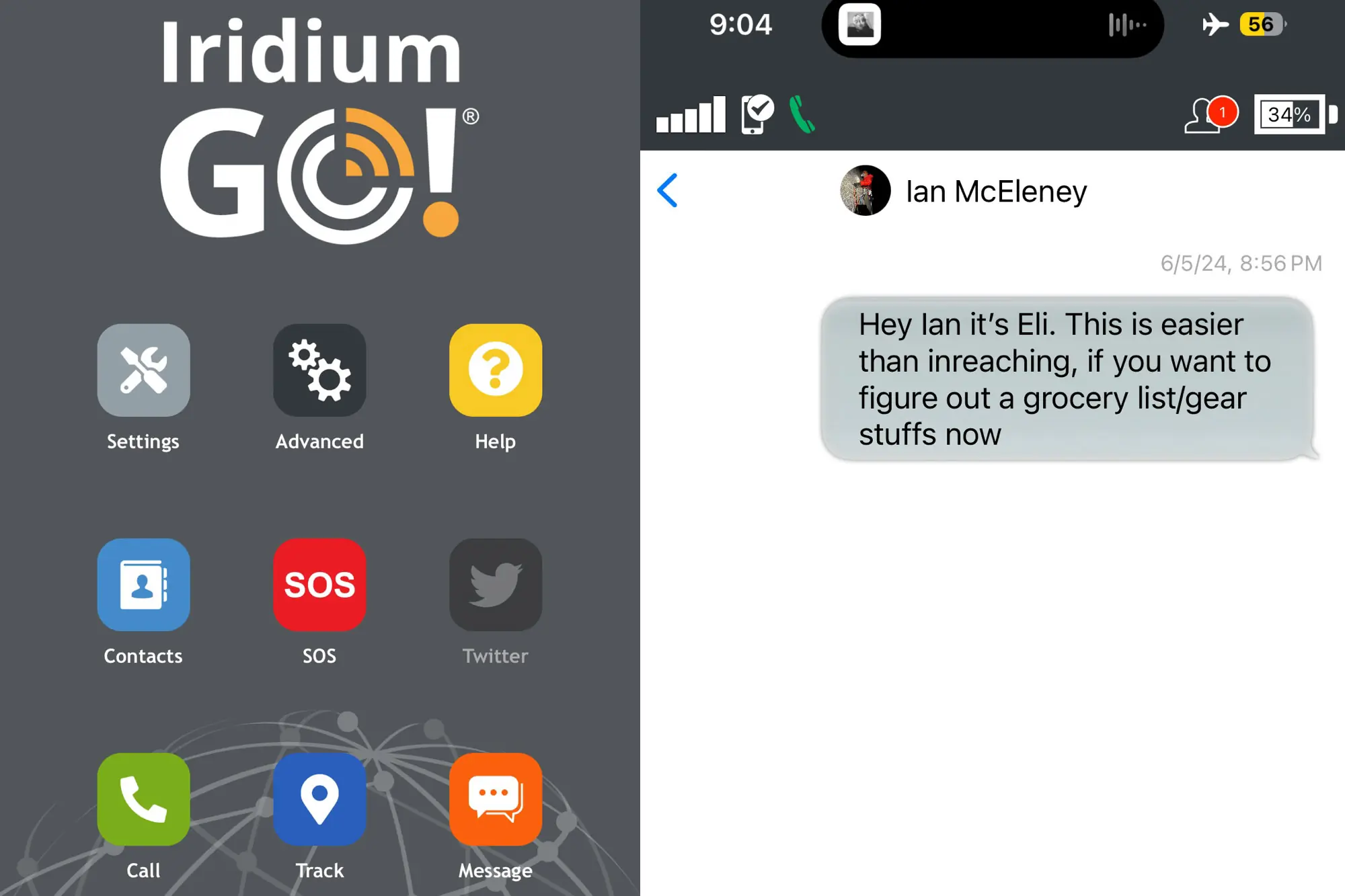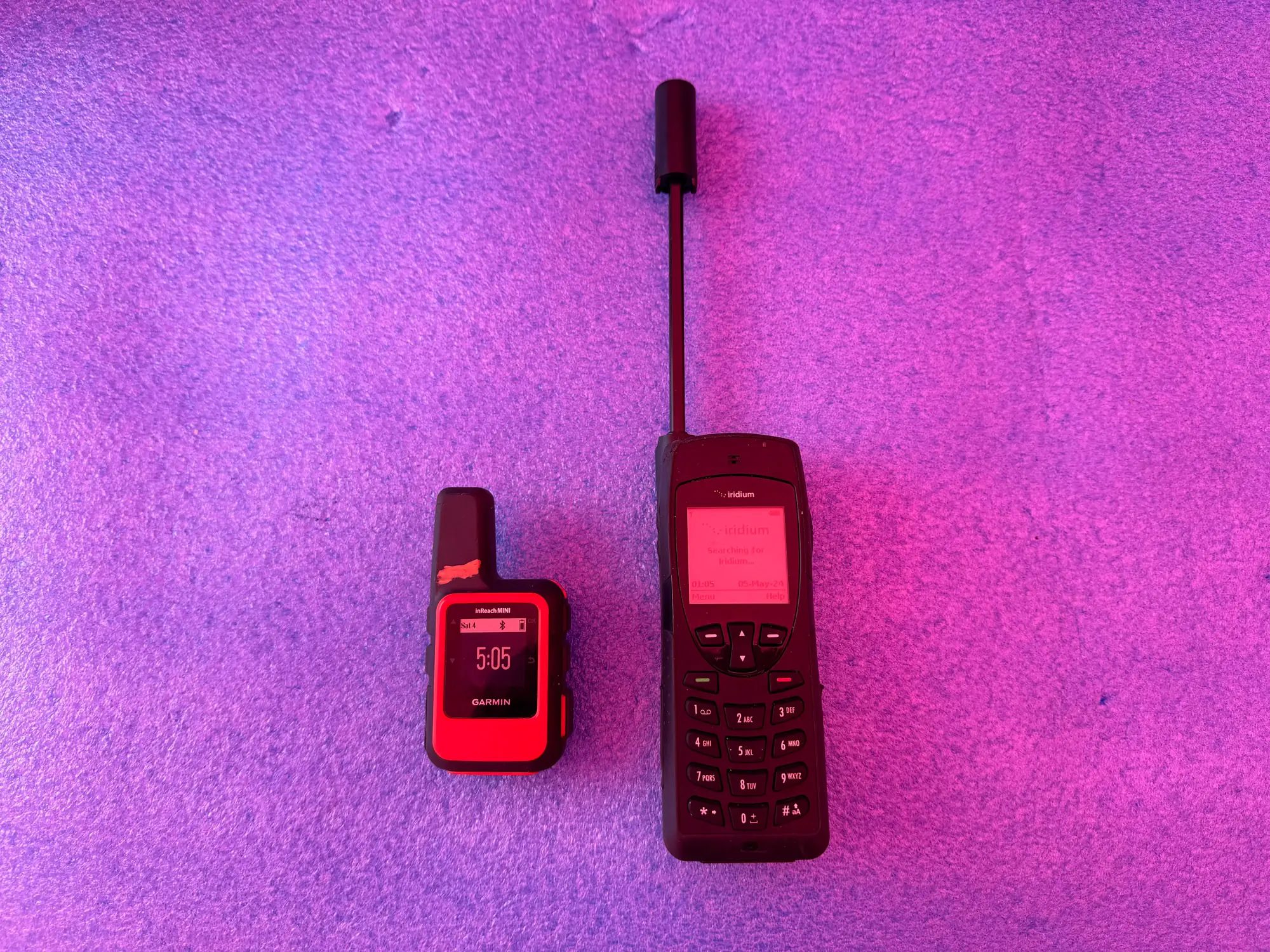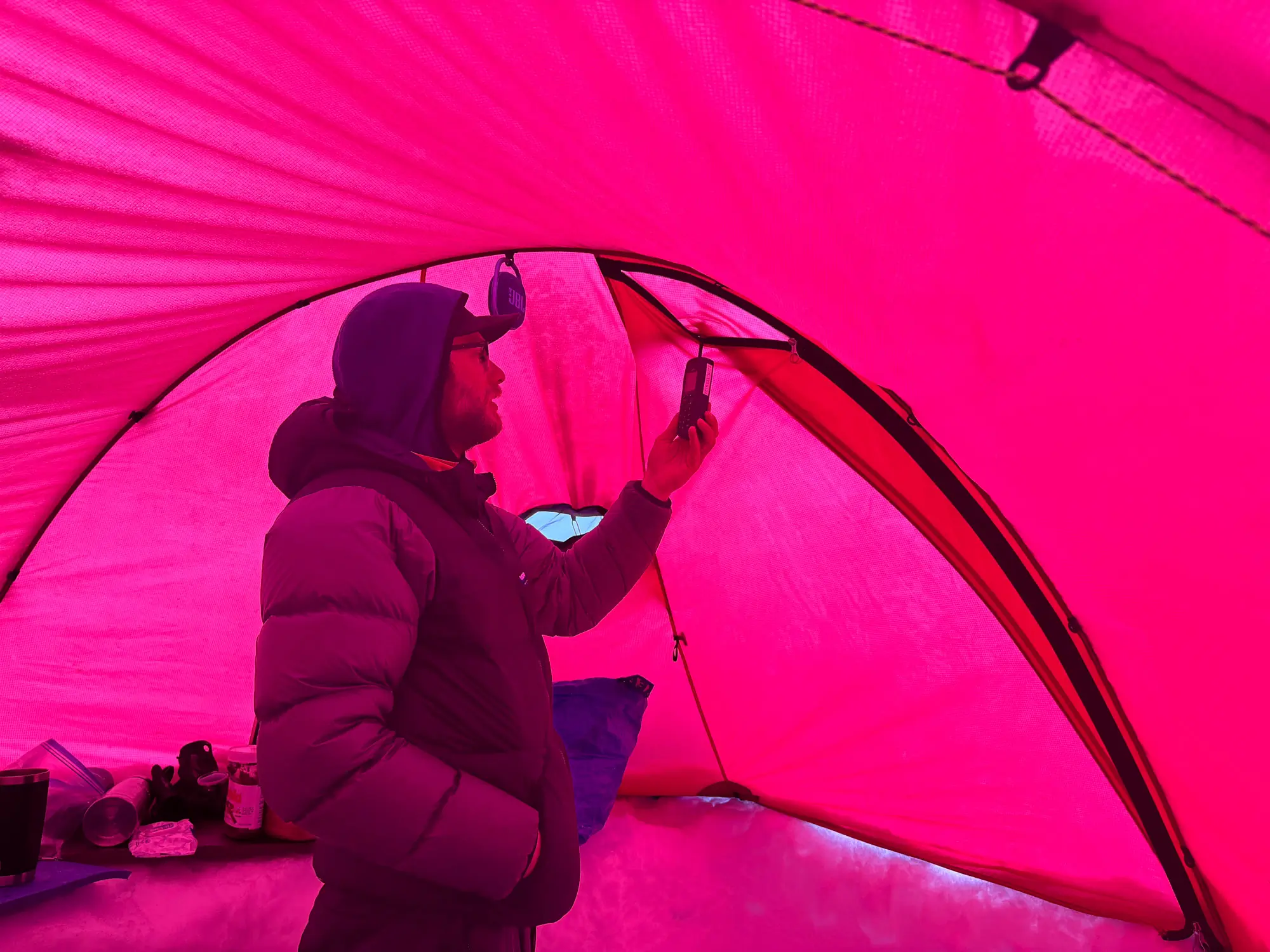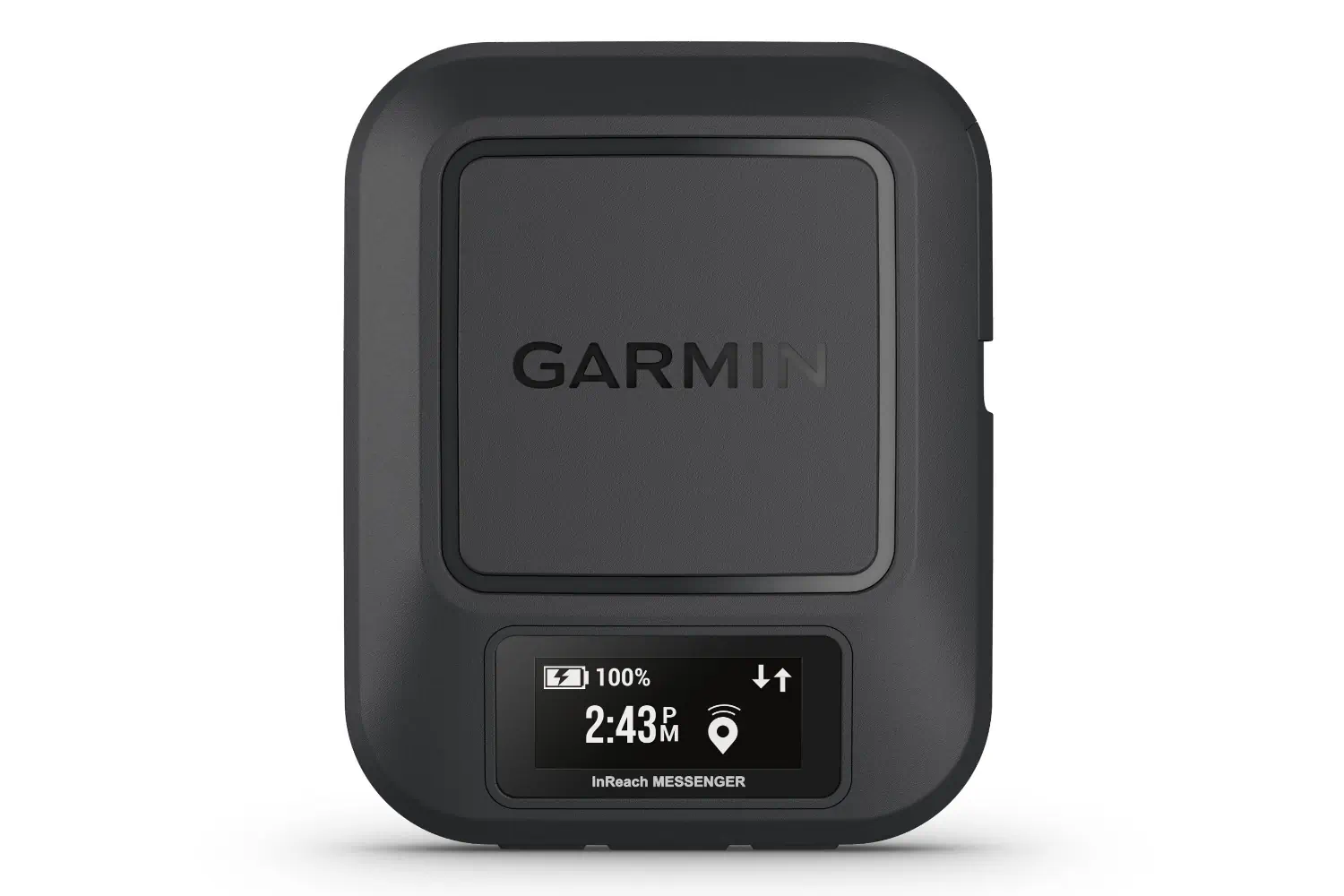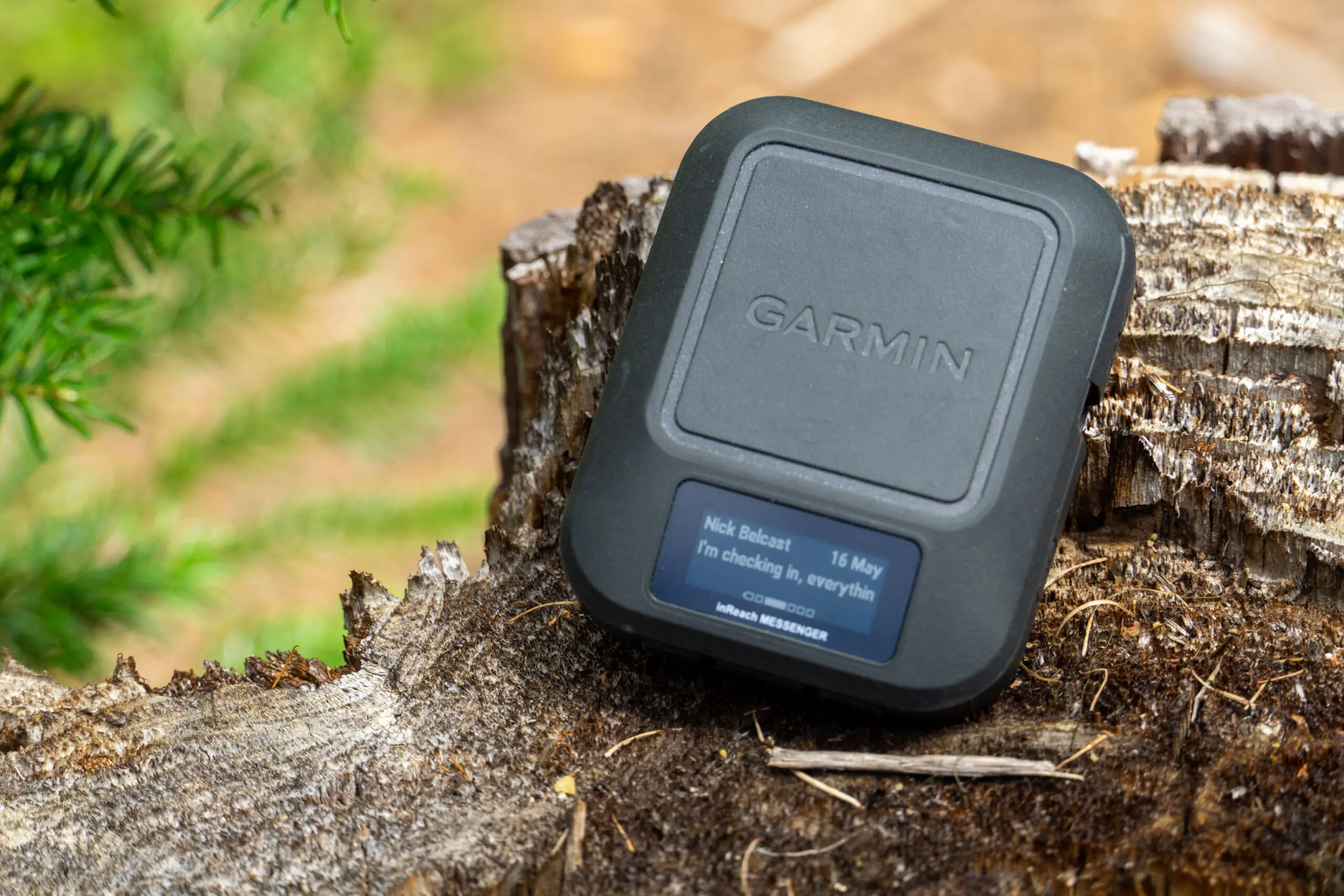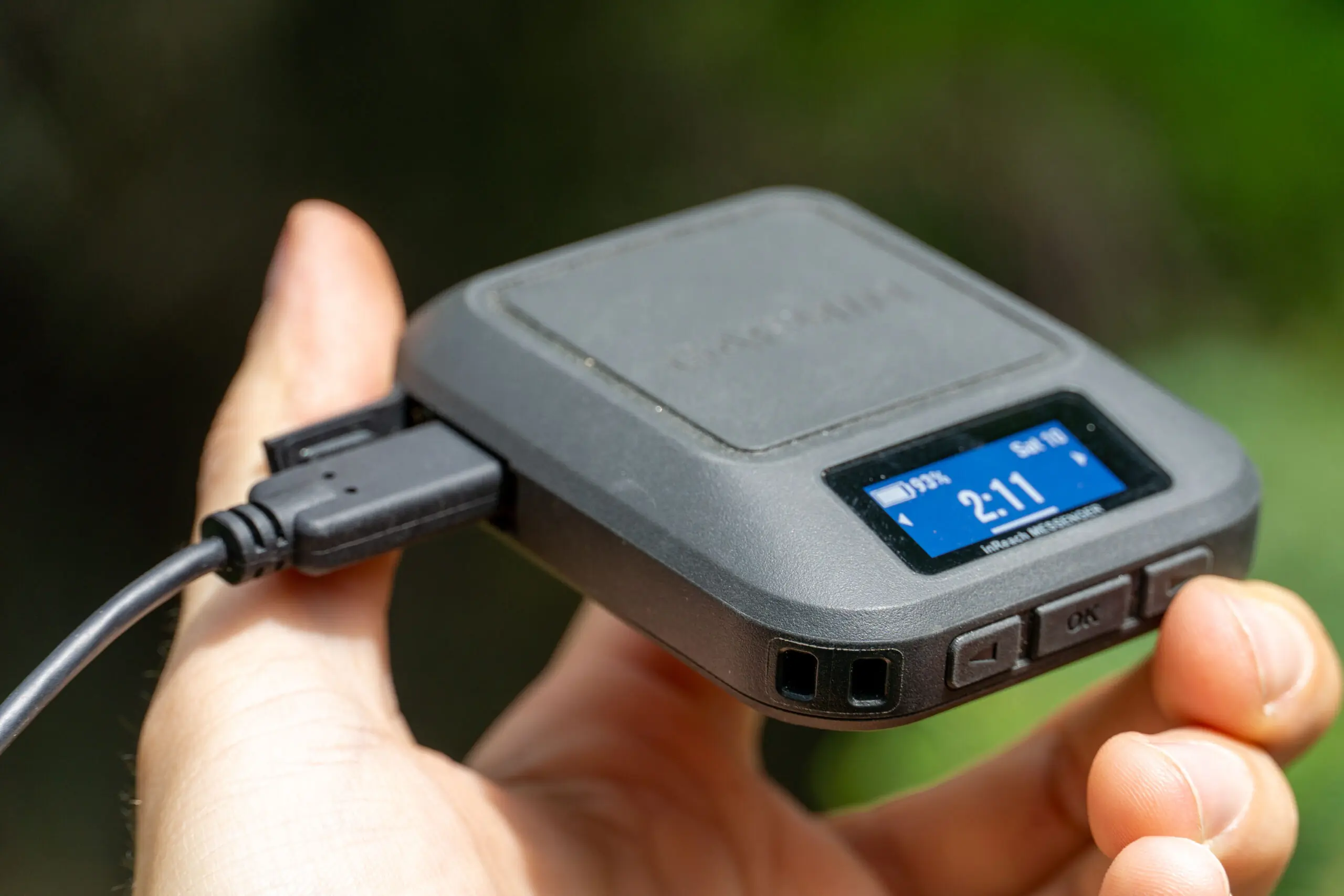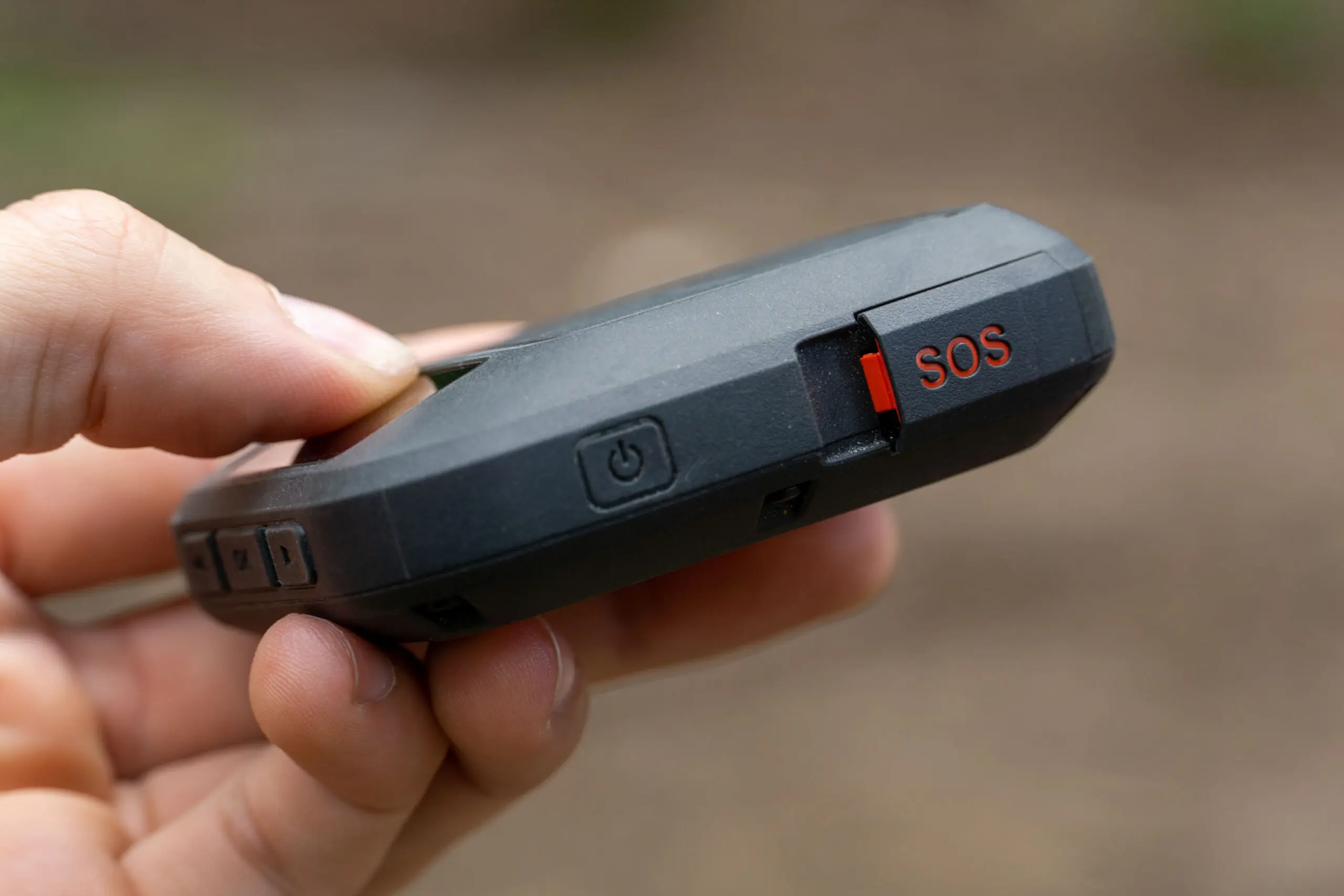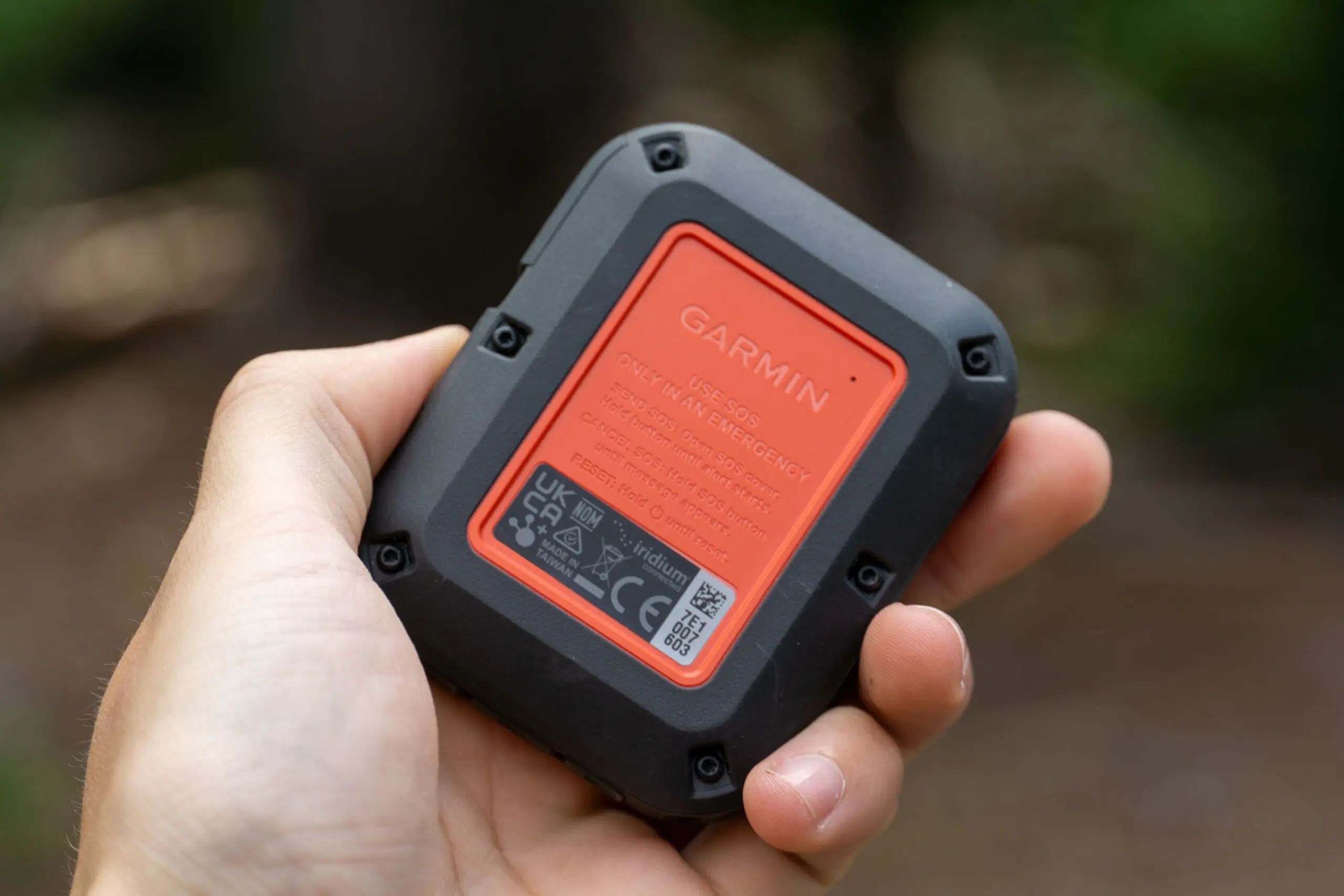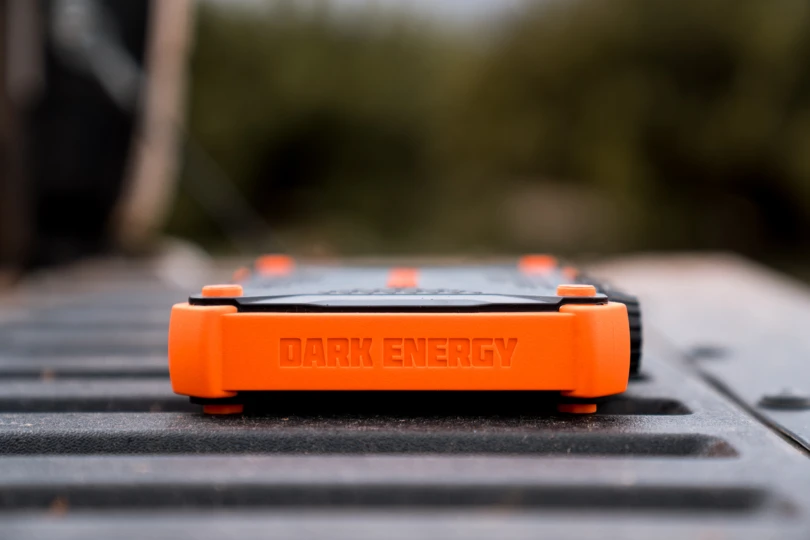While satellite text messengers have become popular tools for backcountry communications, the best satellite phones still have a place in our expedition tool kits. And with subscription plans becoming downright affordable — with some even offering a free phone — why text when you can make a voice call?
We’ve been using satellite phones since before, and now after, they’ve been cool — and we’ve watched the technology advance in that time. Along the way, we’ve traveled to some pretty deep places on this planet and stress-tested the market of sat phones to manage our needs for expedition communications. From the do-it-all Iridium GO! to the budget-friendly Inmarsat IsatPhone 2, there’s something here for any explorer.
We’ve been to the summit of Denali (multiple times now), and our explorers have cut through the static to bring together this list of the top satellite phones (and one worthy messenger) on the market today. All of these handhelds will get your call out when it matters most, and while the humble sat phone may seem dormant for now, there are big things on the horizon. Rest assured, we’ll be disappearing into the bush with those, too, to measure their worth.
Editor’s Note: We updated our Satellite Phone guide on May 20, 2025, to add fresh information on the new age of satellite-assisted cell phone services, and where we see sat phones fitting in today.
The Best Satellite Phones of 2025
Iridium GO!
-
Messaging Ability
9.0
-
Feature Set
9.0
-
Battery Life
7.0
-
Durability
8.0
- Network: Iridium
- Satellite coverage: Global
- Antenna: Flip-up, omnidirectional
- Text messaging: Yes, through Iridium GO! app
- Battery life: 5.5-hour talk, 15.5-hour standby
- Display: Monochrome
- Waterproofing: IP65 and MIL-STD 810F
- Size: 4.5" x 3.2" x 1.2"
- Weight: 10.7 oz.
Pros
- Voice calling and SMS texting with high character limit
- Email capabilities
- GPS tracking
- Programmable one-touch SOS button
- Stowable antenna for more compact design
Cons
- Inconsistent connection can make it difficult to convey adequate amounts of information effectively
- Heavy and large compared to other satellite communication devices
- Necessitates smartphone for functionality
- Relatively limited battery life
Inmarsat IsatPhone 2
- Network: Inmarsat
- Satellite Coverage: 90%, no polar coverage
- Antenna: Fold-out; directional
- Text Messaging: Yes
- Battery Life: 8 hour talk; 160 hour standby
- Display: Color
- Waterproofing: IP65
- Size: 6.6” x 2.9” x 1.1”
- Weight: 11.1 oz.
Pros
- Great value for the price
- Integrated GEOS SOS response
- Ability to send GPS locations
- Excellent battery life
Cons
- Coverage isn't truly global, and leaves off the polar regions
- Directional antenna will require care to keep aligned
Iridium 9555
-
Satellite Connection
8.0
-
Durability
9.0
-
Battery Life
8.0
-
Operating Cost
8.0
- Network: Iridium
- Satellite Coverage: Global
- Antenna: Internally stowed, omnidirectional
- Text Messaging: Yes, T9 predictive text
- Battery Life: 4-hour talk; 30-hour standby
- Display: Monochrome
- Waterproofing: N/A
- Size: 5.6” x 2.1” x 1.1”
- Weight: 9.4 oz.
Pros
- Extensive global coverage and high-quality voice coverage
- Affordable monthly plans
- Compatible with an externally mounted antenna
- Call timer to manage plan usage
Cons
- Global coverage doesn't include U.S. embargoed areas
- Not waterproof-rated
- Does not host a GPS chip
Globalstar GSP-1700
- Network: Globalstar
- Satellite Coverage: North America, most of South America, Europe, Japan
- Antenna: External; directional
- Text Messaging: Yes
- Battery Life: 4 hours talk; 36 hours standby
- Display: Color
- Waterproofing: No
- Size: 5.3" x 2.1" x 1.5"
- Weight: 7.1 oz.
Pros
- Good deals can be found on this device
- U.S. phone number with no added fee
- Compact design
- Fast uncompressed data speeds
Cons
- Satellite coverage map isn't extensive, and there are numerous dead zones
- Phone isn't made anymore, and support may be limited
Garmin inReach Messenger
-
Messaging Ability
9.0
-
Feature Set
7.0
-
Battery Life
8.0
-
Durability
8.0
- Battery Life: 28 days
- Message Composition: On-device options/in-app
- Weight: 4 oz.
- Water Resistance: IPX7
- Satellite System: Iridium
- Subscription Plan: $14.99 per month for annual 'Consumer: Essential' plan
Pros
- Compact size and weight
- Access to global Iridium satellite network
- In-depth functionality
- Extended battery life with reverse USB-C charging
Cons
- Small screen for on-device typing
- Higher initial cost
Satellite Phone Comparison Chart
| Satellite Phone | Price | Satellite Network | Global Coverage | Battery Life | Weight |
|---|---|---|---|---|---|
| Iridium GO! | $855 | Iridium | Global | 5.5 hour talk; 15.5 hour standby | 10.7 oz. |
| Iridium 9555 | $1,150 | Iridium | Global | 4 hours talk; 30 hours standby | 9.4 oz. |
| Inmarsat IsatPhone 2 | $899 | Inmarsat | 90%, no polar coverage | 8 hours talk; 160 hours standby | 11.1 oz. |
| Globalstar GSP-1700 | $499 | Globalstar | North America, most of South America, Europe, Japan | 4 hours talk; 36 hours standby | 7.1 oz. |
| Garmin inReach Messenger | $300 | Iridium | Global (text only) | 28 days w/ a message every 10 minutes; 1 year standby | 4 oz. |
How We Tested the Best Satellite Phones

Some winters ago, while traversing Chile’s Atacama desert, our Toyota Hilux inexplicably died, leaving us stranded on a mountain at 17,000 feet. After a volley of sat-phone calls to friends and mechanics in three countries, we diagnosed the problem as an antitheft system gone haywire.
One final call to Chile’s national police put our extraction in motion with no delay or drama. We could have achieved the same result with our satellite communication device, but voice calls undoubtedly expedited the resolution.
Breakdowns in the Andes aside, you don’t have to travel far to justify a satellite phone. Cellular service in the backcountry of North America is terrible. Drive an hour from Denver, and you might as well be in Mongolia.

Our Testing Process and Testing Grounds
We measured these phones against one another in terms of connection speed, audio quality, and the number of times we had calls drop — not something any of these phones were immune from. As handheld electronics, we also compared more commonplace specs such as battery life (an important feature when aiming to call from the top of North America), display legibility in harsh or dark conditions, and durability when faced with whipping rain or snow.
To date, we have taken satellite phones to the summit of Denali at least three times, as well as toted them along on alpine-style first ascents in the Alaska Range, and along on expeditions into the high deserts of South America. All of these places are exceptionally remote, and we sought out different terrain (signal suffers in glacial gorges vs. broad plains) to test their relative signal reception.
Each of these devices has been used hard and put away wet, and we’re confident in each of their abilities to get out a call when you need it most. To test relative waterproofing, we hit these phones with the spray bottle to ensure they could withstand the moisture.
In a similar way, we also subjected these phones to extreme temperatures — sometimes down to -20 F — to test their ability to shrug off the cold. Finally, the relative time to recharge was also taken into account in our testing.
While satellite phone technology hasn’t evolved much previously, new technology just this year is rapidly advancing, and we’re likely on the brink of true satellite phone coverage integrated into your regular phone. We’ll be testing the newest and greatest, and continue to update our list as new devices become available.




Our Expert Testers
The GearJunkie team plays host to a number of far-flung adventurers who regularly leave cell service in the dust, and while satellite messengers get all the attention these days, there’s undeniable utility in being able to hash out a conversation when you are truly deep in an expedition.
No backyard testing would suffice in testing these sat phones, and we put in the effort to get out there to challenge them. Most recently, tester and mountain guide Eli Spitulnik used these devices to keep in contact while he climbed a first ascent on Mt. Bradley in the Alaska Range, as well as a follow-up ascent of Denali where he guided a team of climbers on the West Buttress.
Being off the grid for 4 weeks at a time requires dialed-in communications, and Eli used these sat phones for everything from getting in-depth weather to hailing the team’s glacier pilot.
Buyer’s Guide: How to Choose a Satellite Phone




Although only three providers dominate the satellite phone market, it’s difficult to know which to choose. Iridium, Globalstar, and Inmarsat all make great products backed by billion-dollar satellite networks. The best option for you hinges on one variable: where you plan to put it to use.
The first step in selecting a provider is comparing coverage maps. Iridium’s 66 low Earth orbit (LEO) satellites offer connectivity to 100% of the globe. Our experience has proven this to be one of the most reliable satellite voice networks out there, and it’s only being improved with time.
Inmarsat’s 15 satellites rotate in geostationary orbit over the equator at a staggering height of 22,236 miles. At such a lofty position, they cover 90% of the planet only missing sight of the poles. By 2026, the provider plans on having launched three additional new-generation Inmarsat I-8 satellites, which will provide additional coverage and future-proof the service into the 2040s.
Globalstar’s constellation of 48 LEO satellites, once chided for spotty coverage, continues to improve. Nonetheless, vast swaths of the world remain outside Globalstar’s reach, making it a non-starter for some users. Still, if your adventures mainly traverse the coverage zones, subscription plans can be affordable.




The Impossible Nature of Direct Comparisons
As much as we would love to pick one phone and network as the ultimate winner for every situation, it’s simply not in the cards. Where and when you attempt to make a call has a direct impact on the ability to connect to satellites.
While camped in Alaska, we have been able to place a call in the morning with a Globalstar phone, but not in the evening. The Inmarsat phone failed to get a signal at all until we relocated to the next valley over. At a camp near Tibet, the Iridium phone was useless, but the Inmarsat phone connected in seconds.
Every phone had moments when it just could not make the link. A shift in time and place is the only remedy.
International Travel and Satellite Phones




During the 5 years we’ve spent compiling these impressions worldwide, each destination required strict attention to satellite phone regulations. Many countries require expensive permits or ban satellite phones outright. Failure to obtain the necessary permissions can result in confiscated phones or stiff fines.
And it gets worse. In a handful of countries (India, North Korea, Libya, etc.) where satellite phones are illegal, unwitting travelers with phones in their luggage are regularly tossed in jail. Know before you go — you’ll be glad you did.
Talk or Text Messaging?
Before you chuck your inReach, SPOT, or Bivystick satellite messengers, evaluate the features you currently use and like. Satellite phones are great, but most don’t offer tracking features, GPS navigational aids, or detailed maps. In that regard, a satellite messenger might be your best bet.
As the cost of satellite phones and services continues to drop, one thing remains constant. When you’re in a jam far from home, hearing a friendly voice on the other end of a phone is priceless. Also, consider if your communication needs require the use of a satellite at all. For short-range chats between camps on Denali, we find that a powerful walkie-talkie makes it happen.
What About Satellite-Enhanced Cell Phones?
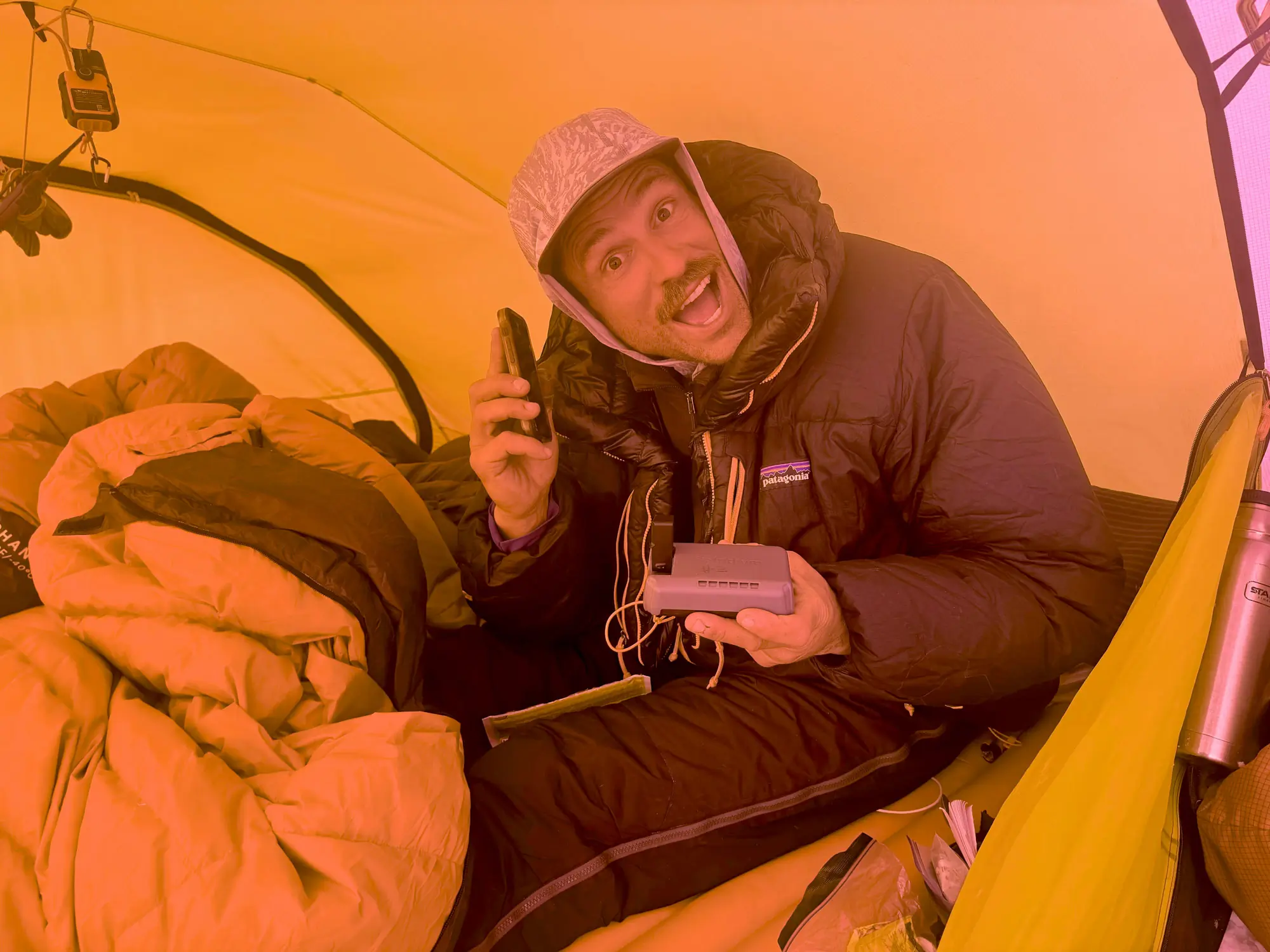



In 2025, rapid advances in satellite service ported directly into your everyday cell phone are happening daily, and there is now a decent portion of the population that can get their hands on a mobile that has some type of satellite-ferried texting service (or an SOS functionality). Soon, it looks like satellite voice will follow, and then image and video, meaning that traditional satellite phones may have some stiff competition soon.
We still see a place for satellite phones today, and it’s really where they’ve always shined: rugged, deep expeditions where backups need backups. Knowing that you’ve got a direct line to the outside world is essential for some trips, and when it’s a zero-sum game, bringing a dedicated device (that you won’t drop and break when taking a photo with it) can make a lot of sense.
Apple iPhone
For a few years now, Apple has offered a satellite-assisted SOS functionality on iPhones, and recently unlocked the functionality further to allow for messaging abilities. These messages are limited in similar ways to the types of messages you can send on most satellite messengers (no images or video), and other than taking a little longer to send, the functionality is similar to texting on the device. We expect voice connectivity will come sometime later this year.
Apple uses Globalstar satellites to support its service, and we expect the same far-latitude limitations that the satellite installation has currently. That still covers a large swath of the populated world, however. The service is free for now, but it isn’t clear if it will always be that way (Apple previously offered its SOS functionality for free for two years, then extended it another).
Starlink and T-Mobile
In early 2025, T-Mobile unlocked a beta version of its T-Satellite service, a Starlink-powered satellite connection that would integrate messages in much the same way the iPhone is offered — an endeavor that’s been a few years in the making. Text messaging is the only service offered currently, with the promise of voice, photo, and data coming soon. Our experience is limited with this service so far, but we are working toward testing it in austere environments soon to see if it stacks up.
Starlink has already made a compact version of its satellite receiver for mobile use, and the service is well-proven at this point. We’re interested to see how quickly other service providers jump onto the satellite bandwagon. It may only be a few years until most people have satellite connectivity in their pockets.
Price & Value
Satellite phones aren’t cheap pieces of technology, and while bounding strides of advancement have been made since their invention, prices still remain relatively high for the privilege of total off-grid voice communications. Still, there exists a range of satellite phones and, with it, a range of features you’ll have access to.




Budget
More budget-minded phones like the Globalstar GSP-1700 won’t provide the widest coverage, and there are certainly places on the planet where you won’t be able to get a call on the Globalstar network. But at a sub $500 price tag and with some of the cheaper service plans available, it can be an excellent way to get into a sat phone — if it covers where you’ll be going.
It’s also important to note that almost every text-only satellite messenger is $400 or less, with subscription plans also being more affordable. Consider if having access to voice calls is worth the extra dough you’ll drop for the privilege. If not, we favor the Garmin inReach Messenger ($300) over just about every other messenger out there.
Mid-Tier
Bumping up to the ~$800 satellite phones is going to be all about the network, and in our opinion, Iridium reigns here. With global coverage, we’ve had the best success at getting a call out on the Iridium GO! ($855) than any other phone. When you factor in that it also does SMS texting, email, and internet access, and can connect to five phones, the value is outsized.
A mid-tier satellite phone like the Inmarsat IsatPhone 2 ($899) also makes a compelling case for itself, and while there are some areas it lacks, it does offer a good amount to make up for it. The biggest difference between this and the premium sat phones out there is going to be the network itself. The Inmarsat satellite network is still robust, but being geostationary and limited in satellites, there is some delay in getting a signal.




Premium
The best satellite phones, which cost upward of $1,000, will add more accessory options to the handheld, such as remote antennas, larger battery packs, and headsets. The Iridium 9555 ($1,150) benefits from all of this, and the ability to stick an antenna outside of your basecamp tent for extended stays does seem to help reception.
The Iridium 9575 ($1,450) does everything the 9555 does, just with a military-grade durability rating for dust and water entry. We haven’t tested this phone yet, but the functionality should be exactly the same. In our minds, this is a steep price for a satellite phone, but if you want the absolute best voice-only sat phone out there, this is it.
Frequently Asked Questions
In this day and age, there is still a definite need for satellite phones, and it only gets greater the further you are from civilization. While satellite messengers work well for recreational use on weekend or even week-long trips, expeditions require a higher level of communication ability to be able to pull off, and when shuttling around information is essential, you need a device that can move a lot at once.
Being able to talk means that you not only get information across faster, but with less confusion and the ability to quickly ask for clarification. This can be the difference between getting the full weather forecast for the rest of the week, and getting the abbreviated synopsis in whatever will fit into 180 characters.
Finally, the feeling of being able to hear a loved one’s voice is also a large draw on extended trips, and can be worth it all on its own.
When looking for a satellite phone, consider first where you’re going to be using it, as this is the most important aspect of your sat phone, and if there’s no coverage, you’ll be carrying around a useless brick. Iridium is the broadest satellite phone service offered currently, and is a safe bet if your adventures will take you around the world.
If you’ll be heading abroad but don’t have the appetite to be a polar explorer, an Inmarsat device can save you a good bit of money, and still provide a high-quality audio connection. Also, consider Thuraya if you only travel to Europe, Africa, Asia, and Australia.
Finally, take a look at the nitty gritty specifications for the phone you’re looking to purchase.
Satellite phones are illegal in several countries that believe they could be used by militant groups or to transmit sensitive information gathered through espionage. This includes China, Pakistan, Cuba, Russia, Chad, Myanmar, Bangladesh, Libya, areas of Nigeria, and India. Specific laws and regulations vary (for example, you can obtain a permit to use a sat phone in India and Cuba, but will be arrested, no questions asked, in Libya or Chad).
To be safe, consult the embassy of the region you are looking to travel to with a satellite phone before doing so to ensure you aren’t absentmindedly breaking any laws (or strongly held traditions).
Like any other wireless device, your reception is only as good as your connection, and with satellite phones being a direct connection device, signal loss can occur as the satellite you’re connected to moves through its orbit.
This can be combated in a number of ways. For one, ensure that you have as wide of a horizon as possible, with a clear view of the sky. Angle your antenna so that it points toward the sky, or if your phone hosts as an eCompass function like Inmarsat devices do, use it to orient yourself toward the satellite.
Iridium sattelites are constantly orbiting and are linked, so service may wane for a few seconds, but will typically recover. Inmarsat satellites, on the other hand, are geosynchrous, meaning that they are a bit tougher to connect to, but once connected, tough to loose signal.
Satellite phones have some impressive reach, not only in where you can call from but also in how far your signal needs to travel to make that happen. The low earth satellites in the Iridium constellation orbit at a little less than 500 miles above the planet, while the Globalstar birds are at a little less than 900. The geosynchronous satellites of the Inmarsat system, however, are a staggering 22,000 miles, which is quite a long way for your signal to travel — twice!
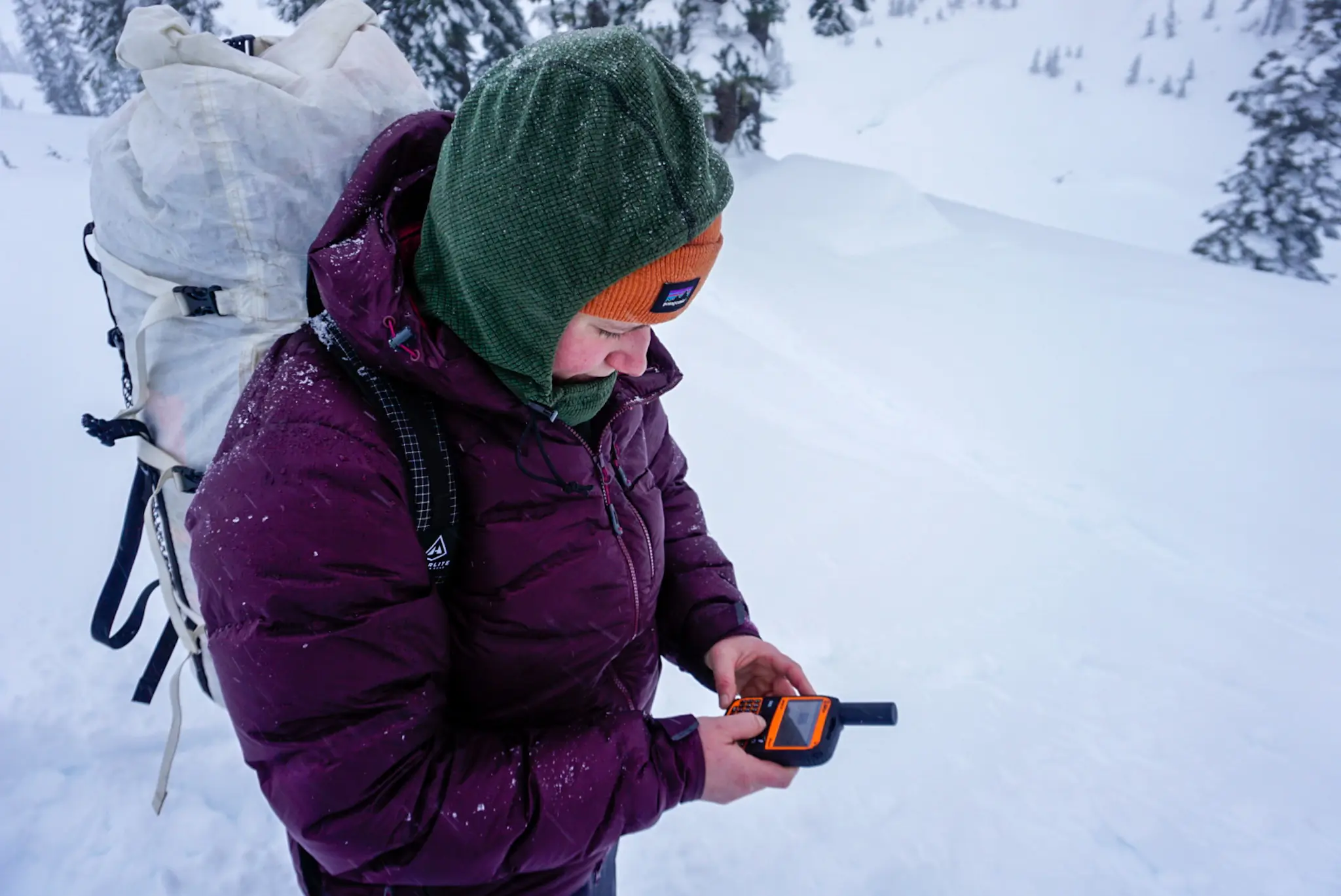

The Best Satellite Messengers of 2025
Failure isn’t an option when it comes to choosing a satellite messenger. When you absolutely need to get the word out, here are the best sat messaging devices in 2025.
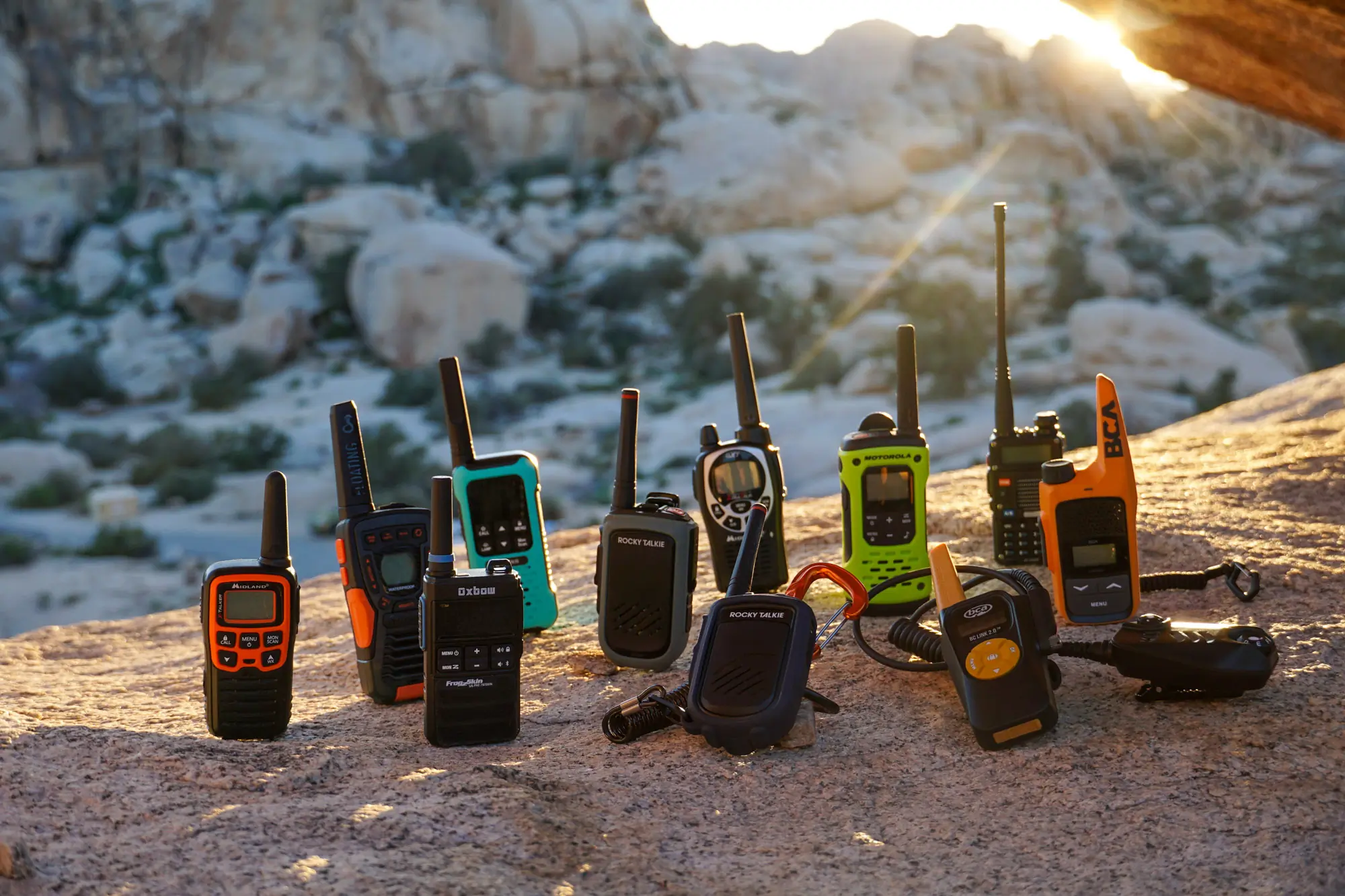

The Best Walkie-Talkies of 2025
A solid set of walkie-talkies can be essential for good backcountry comms, and we’ve tested the spread to nail down the best for your next adventure.
